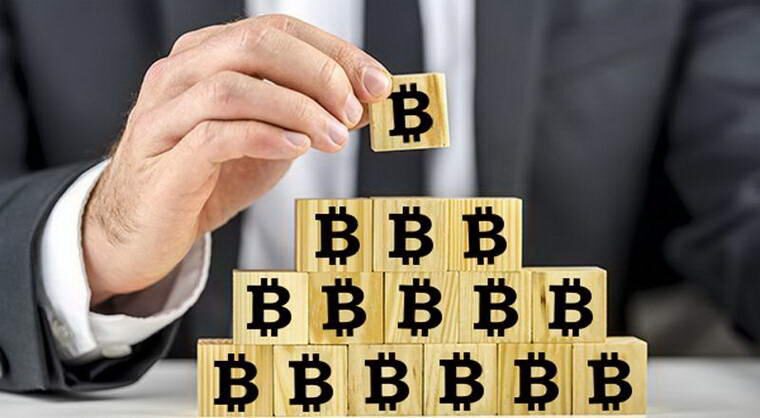How to avoid becoming a victim of crypto pyramids and scams in 2025

Cryptocurrencies are booming across the world, and millions of new investors are entering the market each year. But while Bitcoin and Ethereum have become mainstream, the rise of crypto has also attracted fraudsters. From pyramid schemes to fake exchanges and phishing scams, criminals are stealing billions of dollars annually. In countries like Germany, Poland, and the U.S., regulators are warning investors daily about the growing number of fraudulent projects. Knowing the signs of scams, how to verify projects, and where to seek help is essential for anyone investing in crypto, as highlighted by G.business.
Main signs of crypto pyramid schemes
Crypto pyramids are structured like traditional Ponzi schemes but wrapped in the modern language of blockchain. They lure people with promises of guaranteed profits, usually without showing any real product or technology. Organizers push participants to invite friends and family, claiming that income will grow exponentially. In reality, new deposits are used to pay old investors until the system collapses. Recognizing these warning signs can save investors from serious financial loss.
Typical warning signs:
- Promises of guaranteed high returns with no risk.
- No license, registration, or transparency about the company.
- Withdrawals only possible after recruiting new participants.
- Heavy reliance on referral systems.
- Complex but vague explanations of the business model.
How typical crypto scams operate
Fraudsters use many creative tricks to build trust and steal money. Some scams involve launching a fake token, others mimic legitimate crypto exchanges. Many play on hype, using social media ads and influencers to look credible. Once enough people invest, the organizers disappear with the funds. Learning how these scams operate helps investors avoid emotional decisions and spot red flags early.
Most common scam methods:
- Fake ICOs – raising money for projects that never launch.
- Pump and Dump – artificially inflating token prices before a sudden crash.
- Fake exchanges – clone websites stealing logins and deposits.
- Phishing attacks – emails or fake apps designed to steal private keys.
- Social media scams – fake profiles offering “investment tips” or giveaways.
How to protect yourself from crypto fraud
Protection begins with skepticism and verification. Investors should never believe promises of quick and guaranteed wealth. Every project must be researched before money is sent. Using licensed platforms and keeping funds in secure wallets is essential. Technology provides opportunities for profit but also requires discipline and caution.
Practical protection rules:
- Always check company registration and licenses.
- Never transfer money directly to unknown wallets.
- Use only official apps and websites of exchanges.
- Enable two-factor authentication on all accounts.
- Avoid “guaranteed return” offers — they are always scams.
Real-world examples of major crypto scams
The crypto industry has seen some of the biggest financial frauds in modern history. These cases illustrate how far criminals can go to deceive investors. By analyzing them, we learn how scams are marketed and why they succeed. Billions have been lost worldwide, but each example carries lessons for the future. Understanding their patterns helps investors avoid repeating the same mistakes.
| Scam project | Scam method | Reported losses | Region |
|---|---|---|---|
| OneCoin | Fake cryptocurrency, no blockchain | €4 billion | Europe, Asia |
| PlusToken | Mobile wallet scam | $2 billion | China, Korea |
| Bitconnect | Ponzi with trading bot claims | $1 billion | U.S., Europe |
How to verify a project before investing
Due diligence is the best defense. Every investor should treat crypto projects like startups — check the team, the product, and independent reports. Fraudulent projects avoid scrutiny and leave gaps in their information. If there is no real product or technical transparency, this is a red flag. Spending extra time on verification is always cheaper than losing money.
Checklist for verification:
- Is the company licensed by a regulator?
- Are team members real, with verified profiles (LinkedIn, media presence)?
- Is there technical documentation or code on GitHub?
- Do independent sources (media, analysts) mention the project?
- What do users say on forums like Reddit or Bitcointalk?
Steps to take if you suspect fraud
Acting fast is critical. The earlier you react, the higher the chance of recovering money or preventing further damage. Many people hesitate or feel ashamed, which allows scammers to escape. Authorities recommend documenting everything and reporting immediately. Even if funds cannot be returned, preventing others from being scammed is just as important.

Recommended steps:
- Save all emails, chats, and transaction details.
- Report the case to local police or cybercrime units.
- Contact financial regulators (e.g., BaFin in Germany, KNF in Poland, SEC in the U.S.).
- Warn the community through forums and social networks.
- Change all passwords and secure crypto wallets.
Institutions that can help
Several international and national institutions provide support to victims of fraud. Knowing where to turn makes the process faster and more effective. Many of these organizations publish regular warning lists of suspicious projects. Checking these lists before investing can save money. Below are some of the most relevant organizations for investors in Europe.
| Institution | Role | Website |
|---|---|---|
| BaFin (Germany) | Financial regulation, warnings | www.bafin.de |
| KNF (Poland) | Consumer protection and licensing | www.knf.gov.pl |
| UOKiK (Poland) | Competition and consumer rights | www.uokik.gov.pl |
| ESMA (EU) | Supervises securities markets | www.esma.europa.eu |
| Europol | International cybercrime prevention | www.europol.europa.eu |
Final recommendations for crypto investors
The crypto market in 2025 remains both an opportunity and a risk. While legitimate projects are building the future of finance, fraudsters are exploiting investor excitement. Every investor should combine curiosity with caution and discipline. Using secure exchanges, following regulators’ warnings, and staying informed are the best defenses. Ultimately, the rule is simple: if an offer looks too good to be true, it almost always is.
Latest events in politics and global economy at Cryptonews – practical tips on how to act and invest. Read: Why can crypto exchanges block your funds — and how to avoid losses